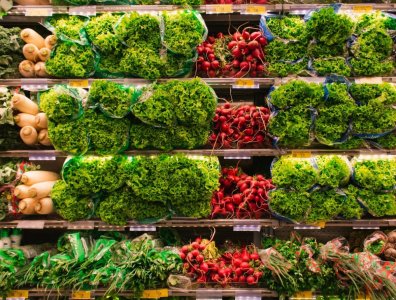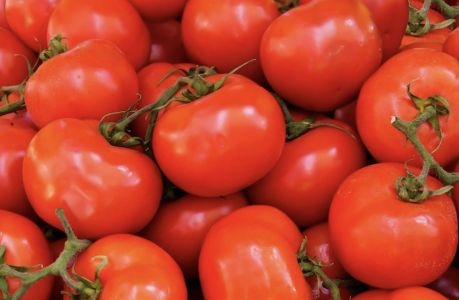Why grocery prices could shift this month—and what it means for your next salad
By
Veronica E.
- Replies 0
If you’ve been keeping a closer eye on grocery prices lately, you’re not alone.
From pantry staples to fresh produce, many shoppers are noticing subtle increases at the checkout line.
Now, a behind-the-scenes policy change could cause a new round of price adjustments—starting as soon as mid-July.
While the details might not be on your radar yet, the impact could show up in your cart sooner than you think.
Here’s what’s changing, and why it matters for anyone planning their next meal.

What’s changing and why it matters
For nearly 30 years, an agreement between the US and Mexico has helped keep fresh tomato prices relatively stable.
Known as the Tomato Suspension Agreement, this pact was first signed in 1996 to prevent imported Mexican tomatoes from undercutting US-grown produce.
It set minimum prices and called for quality inspections—helping balance supply and affordability for shoppers.
But that agreement is about to end.
Starting July 14, the US Commerce Department will allow it to expire.
That means tomatoes imported from Mexico—which make up around 90% of the nation’s fresh supply—will now be subject to a 17% tariff, likely leading to price hikes at grocery chains like Walmart, Kroger, and Whole Foods.
Also read: The USDA’s latest move—how it could shake up your food habits and grocery list
How this might affect your grocery bill
Tomato distributors are already preparing for the impact.
Rodolfo Spielmann, CEO of NatureSweet (the largest tomato distributor in the US), says his company has no way to absorb the tariff.
Instead, he anticipates a 10% increase in prices across all tomato products sold in major retail chains.
That price bump may extend beyond the produce section, too—affecting items like pasta sauce, salsa, and deli-made sandwiches.
Retailers must now decide whether to pass these added costs along to consumers, try to absorb them, or seek alternative suppliers—though options are limited, given the scale of tomato demand in the US.
Also read: Why is everyone freaking out over this "iconic" tomato at a restaurant? The internet can't decide if it's genius or just plain weird!
Why this is happening now
The original trade agreement was created to address a 1990s dispute, when US tomato farmers accused Mexican producers of “dumping” cheap tomatoes on the market to gain share.
Over time, it was renegotiated several times—most recently in 2019.
But domestic growers, particularly in Florida, have long argued that the protections didn’t go far enough.
With US tomato production steadily declining, some lawmakers and farmers hope the end of the agreement could help revitalize local agriculture.
Also read: Tomato recall linked to salmonella: What you need to know to stay safe
But can US farms meet the demand?
Here’s the challenge: the US hasn’t produced enough tomatoes to meet its own needs for decades.
About three-quarters of fresh tomatoes sold in the country are imported, primarily from Mexico.
So even if the end of the agreement offers a boost to American farmers, it’s unlikely to quickly replace what consumers are used to finding on store shelves.
That leaves shoppers stuck in the middle—facing higher prices at checkout while supply and trade dynamics shift behind the scenes.

Also read: Savory Oatmeal with Tomato & Sausage
A bigger picture about food policy and price
This tomato tariff is just one example of the tension between supporting local farms and keeping food affordable.
Policymakers are tasked with protecting domestic industries, but grocery shoppers are feeling the pressure of inflation.
For everyday Americans, especially those on fixed incomes, even a small price increase in a staple ingredient can make meal planning more difficult.
Also read: Are you breaking the rules by ordering off the kids’ menu? This restaurant’s strange policy has everyone talking!
What tomato lovers can do
There are a few ways to prepare if you’re worried about rising prices:
At The GrayVine, we’re here to help you stay informed on what’s changing in your world—especially when it hits close to home (and the dinner table).
Read next: Food safety alert: Packaging error in popular snack triggers precautionary recall

Are you thinking about stocking up before July 14? Do you have tips for making the most of your grocery budget—or maybe a favorite tomato-free recipe that’s still a crowd-pleaser? Share your thoughts in the comments!
From pantry staples to fresh produce, many shoppers are noticing subtle increases at the checkout line.
Now, a behind-the-scenes policy change could cause a new round of price adjustments—starting as soon as mid-July.
While the details might not be on your radar yet, the impact could show up in your cart sooner than you think.
Here’s what’s changing, and why it matters for anyone planning their next meal.

Grocery prices may shift this summer as trade agreements change—shoppers could feel the impact at checkout. Image Source: Pexels / Matheus Cenali.
What’s changing and why it matters
For nearly 30 years, an agreement between the US and Mexico has helped keep fresh tomato prices relatively stable.
Known as the Tomato Suspension Agreement, this pact was first signed in 1996 to prevent imported Mexican tomatoes from undercutting US-grown produce.
It set minimum prices and called for quality inspections—helping balance supply and affordability for shoppers.
But that agreement is about to end.
Starting July 14, the US Commerce Department will allow it to expire.
That means tomatoes imported from Mexico—which make up around 90% of the nation’s fresh supply—will now be subject to a 17% tariff, likely leading to price hikes at grocery chains like Walmart, Kroger, and Whole Foods.
Also read: The USDA’s latest move—how it could shake up your food habits and grocery list
How this might affect your grocery bill
Tomato distributors are already preparing for the impact.
Rodolfo Spielmann, CEO of NatureSweet (the largest tomato distributor in the US), says his company has no way to absorb the tariff.
Instead, he anticipates a 10% increase in prices across all tomato products sold in major retail chains.
That price bump may extend beyond the produce section, too—affecting items like pasta sauce, salsa, and deli-made sandwiches.
Retailers must now decide whether to pass these added costs along to consumers, try to absorb them, or seek alternative suppliers—though options are limited, given the scale of tomato demand in the US.
Also read: Why is everyone freaking out over this "iconic" tomato at a restaurant? The internet can't decide if it's genius or just plain weird!
Why this is happening now
The original trade agreement was created to address a 1990s dispute, when US tomato farmers accused Mexican producers of “dumping” cheap tomatoes on the market to gain share.
Over time, it was renegotiated several times—most recently in 2019.
But domestic growers, particularly in Florida, have long argued that the protections didn’t go far enough.
With US tomato production steadily declining, some lawmakers and farmers hope the end of the agreement could help revitalize local agriculture.
Also read: Tomato recall linked to salmonella: What you need to know to stay safe
But can US farms meet the demand?
Here’s the challenge: the US hasn’t produced enough tomatoes to meet its own needs for decades.
About three-quarters of fresh tomatoes sold in the country are imported, primarily from Mexico.
So even if the end of the agreement offers a boost to American farmers, it’s unlikely to quickly replace what consumers are used to finding on store shelves.
That leaves shoppers stuck in the middle—facing higher prices at checkout while supply and trade dynamics shift behind the scenes.

Fresh produce like tomatoes could see price changes this summer due to shifts in international trade policy. Image Source: Pexels / Pixabay.
Also read: Savory Oatmeal with Tomato & Sausage
A bigger picture about food policy and price
This tomato tariff is just one example of the tension between supporting local farms and keeping food affordable.
Policymakers are tasked with protecting domestic industries, but grocery shoppers are feeling the pressure of inflation.
For everyday Americans, especially those on fixed incomes, even a small price increase in a staple ingredient can make meal planning more difficult.
Also read: Are you breaking the rules by ordering off the kids’ menu? This restaurant’s strange policy has everyone talking!
What tomato lovers can do
There are a few ways to prepare if you’re worried about rising prices:
- Buy in-season: Tomatoes are cheapest in summer, especially at local farmers markets.
- Preserve extras: Consider canning, freezing, or making sauce from fresh tomatoes while prices are still lower.
- Explore alternatives: Canned tomatoes, pastes, or even roasted red peppers can be flavorful substitutes.
- Grow your own: If you have a sunny balcony or backyard, tomatoes are relatively easy to grow—and delicious when homegrown.
At The GrayVine, we’re here to help you stay informed on what’s changing in your world—especially when it hits close to home (and the dinner table).
Read next: Food safety alert: Packaging error in popular snack triggers precautionary recall
Key Takeaways
- A trade agreement that kept imported tomato prices lower is expiring on July 14, triggering a new 17% tariff on tomatoes from Mexico.
- Retailers like Walmart, Kroger, and Whole Foods are expected to pass on the cost, with tomato prices projected to rise by about 10%.
- Since the US relies on imports for most of its fresh tomatoes, domestic production alone won’t be able to fill the gap immediately.
- While the change may help US farmers long-term, shoppers are likely to feel the pinch at checkout in the coming weeks.
Are you thinking about stocking up before July 14? Do you have tips for making the most of your grocery budget—or maybe a favorite tomato-free recipe that’s still a crowd-pleaser? Share your thoughts in the comments!






